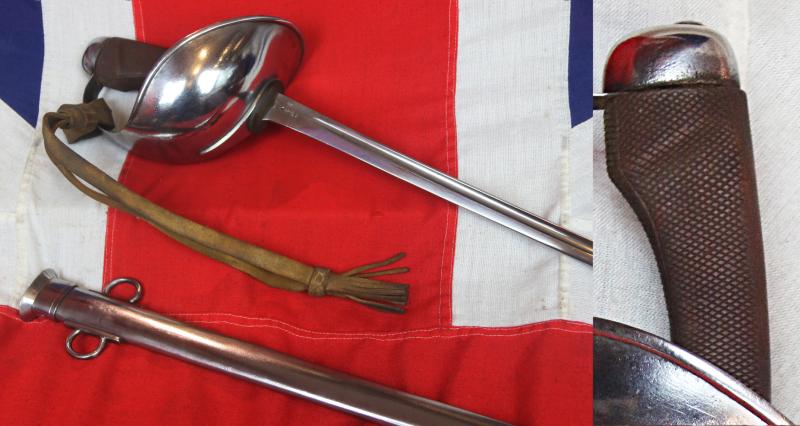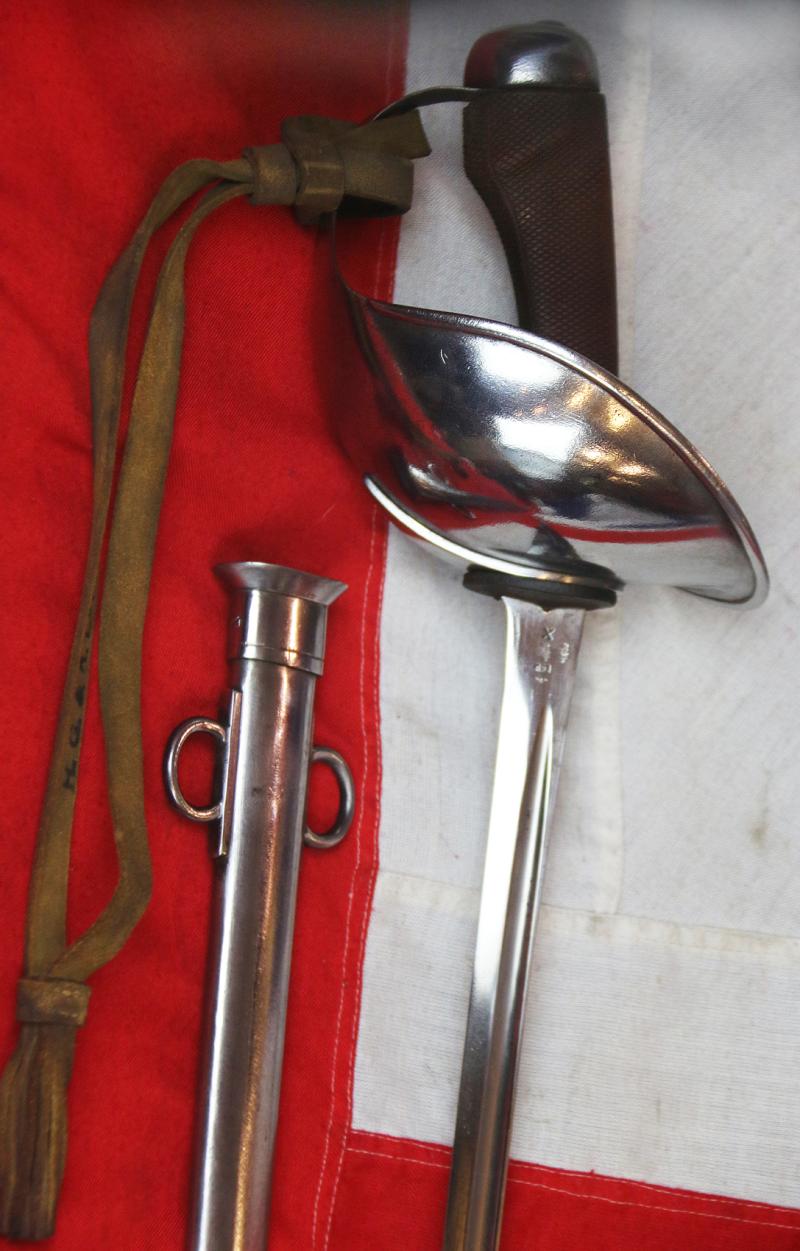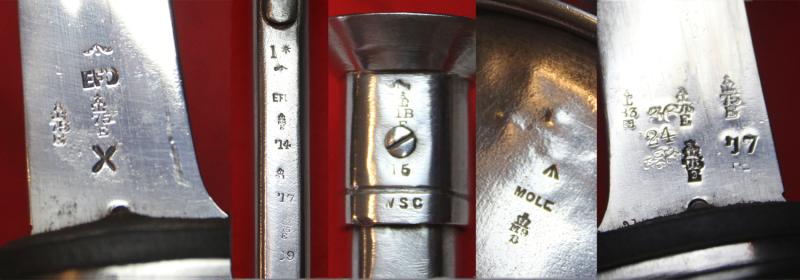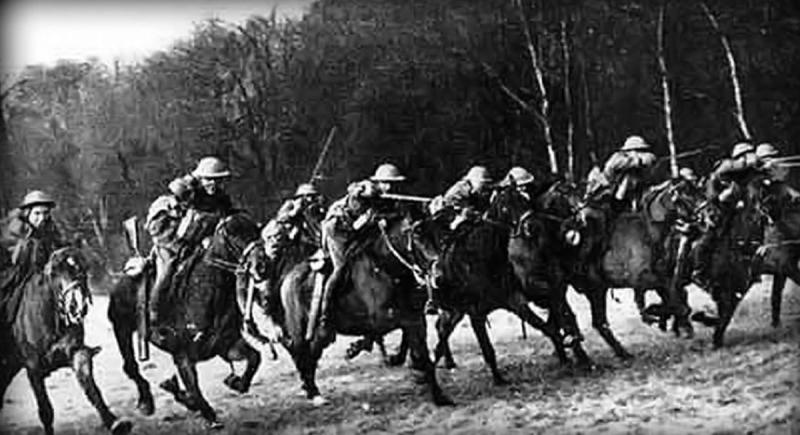Superb, 1908 Pattern, Historical, British Cavalry Trooper's Sword by Mole & Wilkinson Sword Co. Issue of 1909. British Front Line Cavalry Issue, & 1918 Australian Light Horse Issue, Original 1918 Australian Light Horse Service Issue Buff Hide Sword Knot
Just returned from the workshop after 40 hours of expert hand polishing and conservation in order to return it, as close as possible, to its original issue bright polish finish. It revealed after all that expert effort it has just natural age wear and surface patination, and with no damage signs at all. It is now transformed back into its excellent condition for its age. We pride ourselves for the use of our expert conservation and restoration artisans, that are some of the very best available in the country, some expertly trained for over 40 years. Many types of conservation skills are now sadly lost, but some are still maintained, with no expense spared attitude in order to preserve historical artefacts for generations to come.
With many original ordnance inspection stamps still present, an the earliest is {'09} 1909, with several others, {'14} 1914, {'17} 1917, {'24} 1924, {'36}1936. It still has its original WW1 Australian issue buff hide sword knot still attached, by Hepburn, Gale & Ross Ltd. The knot also shows over 100 years of completely natural aging and darkening, yet still retains its great condition. The Australian service pattern issue knot differed somewhat from the standard British service issue leather knot.
Early British army regimental markings on the inner bowl, for the British front line regiments to which it was issued in 1909, and thus used at the outbreak of the war and through to the end of 1917, but its early war regimental markings were later struck out for its later war re-issue to the Australian Light Horse in 1918. No Australian Light Horse issue swords ever bore any Australian issue markings {certainly none that been found so far}. Likely as they were issued straight to the regiments direct at the front line in Turkey, and never went to the Australian ordnance until after the war.
One of the earliest issued examples of the 1908 trooper's sword, issued and used by British front rank cavalry, lancers and hussars from 1914, right through 1914,15,16,17, until it was re-issued and sent to Australian forces in 1918, as a WW1 Australian service, Australian Light Horse 1908 trooper's sword.
All the Australian issued swords came in 1918 to units in the Middle East and came from most British and Canadian cavalry units who were eventually dismounted in the trenches and had no further need for swords. The Australian regiment mostly used the 1908's in 1918 for routing entrenched Turkish forces positions. Before the availability of the swords the cavalry famously used their 1907 pattern hook quillon bayonets.
In its earliest service, it would have seen service with, for example, such as the 6th Dragoon Guards. In August 1914, the 6th D.G, deployed to France as part of the British Expeditionary Force. It served throughout the First World War (1914-18) on the Western Front, fighting in many engagements in both a mounted and infantry role. These included Mons (1914), the Marne (1914), the first two battles of Ypres (1914 and 1915), the Somme (1916), Arras (1917), Cambrai (1917) and Amiens (1918). 6 DG remained as mounted cavalry throughout the war, but there were occasions, notably during March/April 1918, when they did duty in the trenches or helped stem an attack. For these occasions they were dismounted temporarily. An original sword as can be seen used to incredible effect in the magnificent epic, by Steven Spielberg, 'Warhorse'. An antique original issue trooper's sword with full ordnance markings, used in the frontline British cavalry regiments during WW1. A current Cavalry pattern still used today by all forms of the current British Cavalry. Considered to be the best designed cavalry sword ever made. In exceptionally good condition, a superb collector's item from the finest cavalry in the world. Steel bowl with inner part still with original darkening present. Its steel scabbard is superb, as is its traditional service issue hardened rubber grip with crosshatching. Early in WW1, cavalry skirmishes occurred on several fronts, and horse-mounted troops were widely used for reconnaissance. Britain's cavalry were trained to fight both on foot and mounted, but most other European cavalry still relied on the shock tactic of mounted charges. There were isolated instances of successful shock combat on the Western Front, where cavalry divisions also provided important mobile fire-power. Beginning in 1917, cavalry was deployed alongside tanks and aircraft, notably at the Battle of Cambrai, where cavalry was expected to exploit breakthroughs in the lines that the slower tanks could not. At Cambrai, troops from Great Britain, Canada, India and Germany participated in mounted actions. Cavalry was still deployed late in the war, with Allied cavalry troops harassing retreating German forces in 1918 during the Hundred Days Offensive, when horses and tanks continued to be used in the same battles. In comparison to their limited usefulness on the Western Front, "cavalry was literally indispensable" on the Eastern front and, in the Middle East, & Turkey.
Code: 25527
1125.00 GBP










